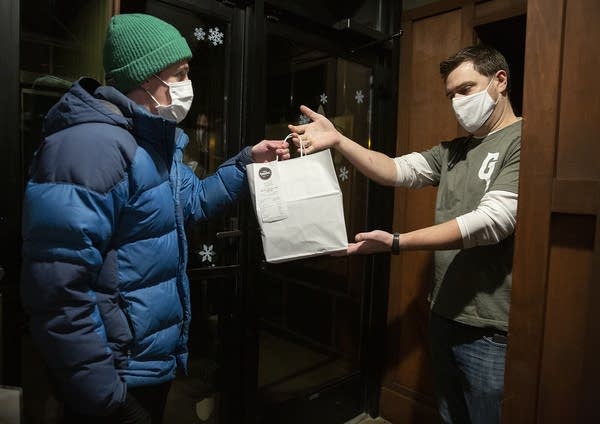Walz's newest COVID-19 order: 7 questions, answered

From left, Robin Harkins receives a takeout order from general manager Sean Corrigan on Nov. 18 at The Gnome in St. Paul.
Christine T. Nguyen | MPR News file
Go Deeper.
Create an account or log in to save stories.
Like this?
Thanks for liking this story! We have added it to a list of your favorite stories.


